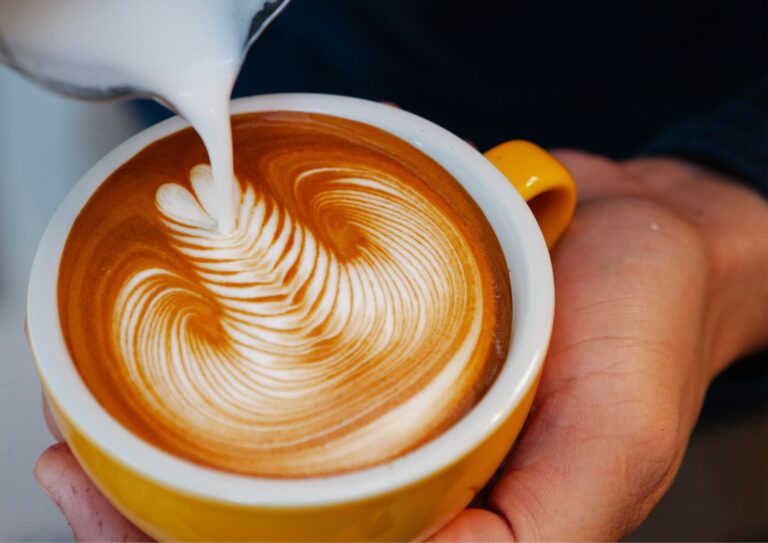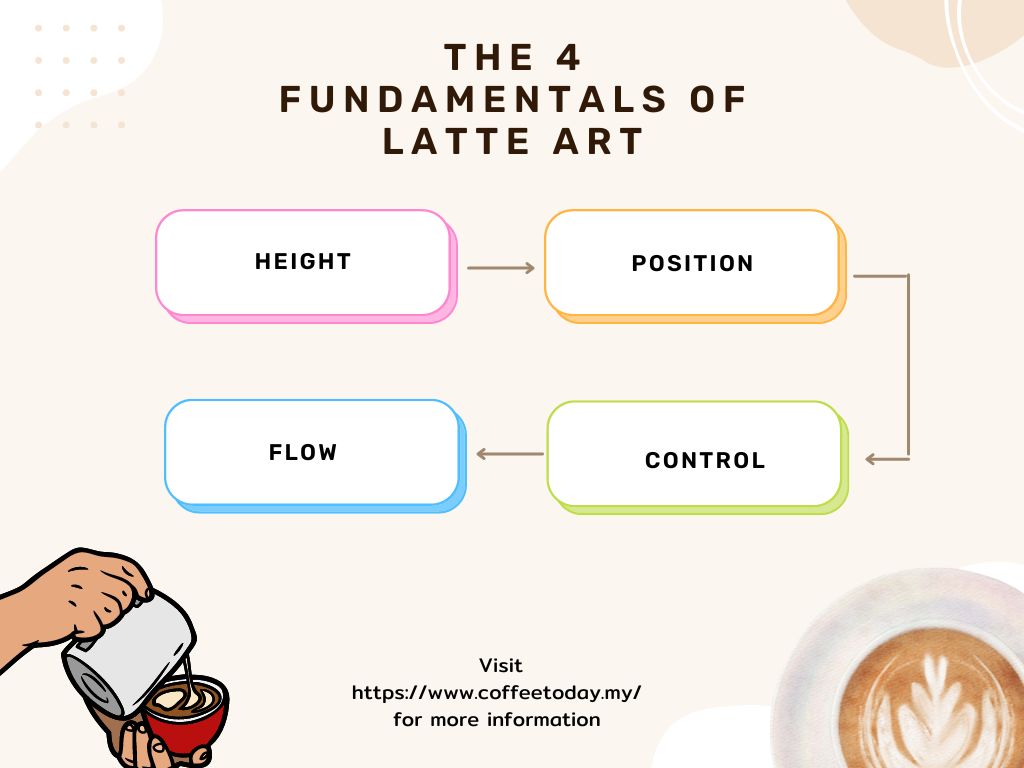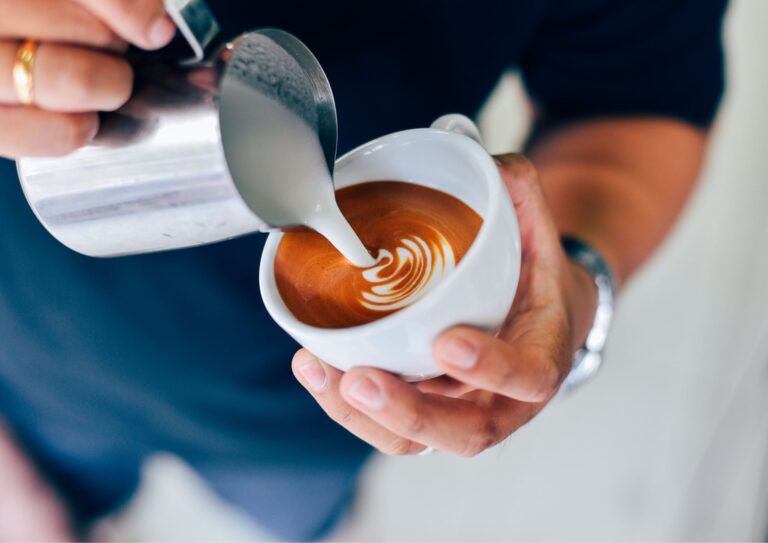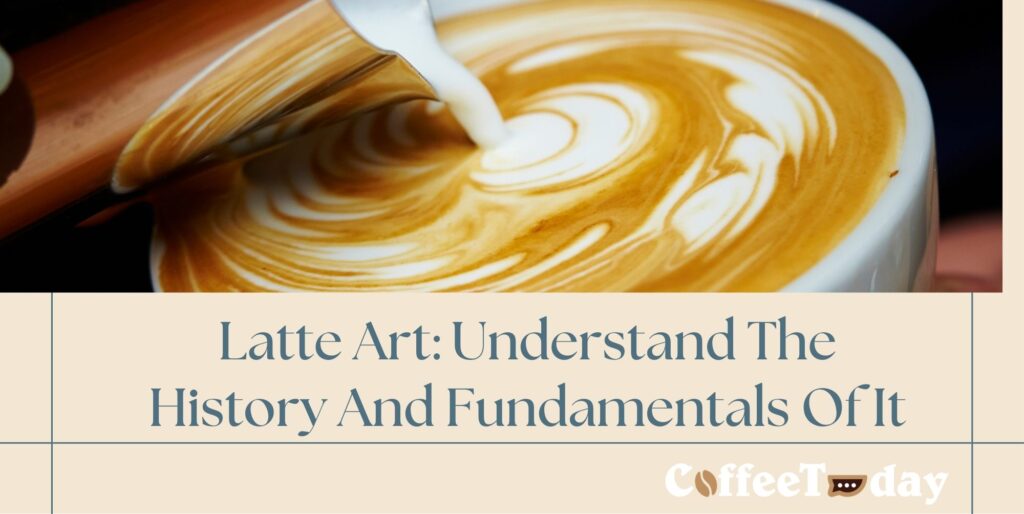When you stroll into a modern cafe, one of the first things that may catch your eye is the beautifully crafted design on top of the coffee. These delicate and intricate designs is known as latte art. It has become an integral part of the coffee culture, captivating coffee enthusiasts and baristas alike.
Latter art is one of the symbols that is highly recognized in the coffee culture. Most baristas will know that latte art is an endeavor that requires much more understanding. It requires skill to create the artwork on the coffee. They have to spend plenty of their time practicing to master the skill.
But how much do you know about latte art? Have you ever wondered about the history of this captivating art form? Let’s delve into the origins and techniques that make latte art a true sensory delight.
What Is Latte Art?

Most of you should have heard of latte art; it is a method of preparing coffee and is quite popular in the coffee industry. It refers to creating visually appealing designs or patterns on the surface of espresso-based beverages. It involves skillfully pouring microfoam into a shot of espresso, and manipulating the microfoam flow and texture to create artistic shapes, patterns, or even intricate images.
Baristas commonly use latte art to produce shapes and figures on the foam surface of popular espresso-based beverages, such as cappuccinos and lattes. The image comes from the contrast between the white microfoam and the rich, dark espresso drinks.
You may be curious what is the microform. The microform is a form of textured, steamed milk. While the cream is an emulsion of brewed coffee and coffee oils. Besides using the microform to create the desired shapes, you can also ‘draw’ latte art patterns on the surface.
Baristas use their expertise and creativity to control the pouring technique, resulting in beautiful and visually pleasing designs. It requires long hours to create attractive latte art patterns consistently. Perfect pattern symmetry, consistency, and high color contrast are what barista wants to achieve.
To achieve this goal, it is important to consistently create perfect usable conditions for the espresso and milk besides the barista’s skill set.
The History of Latte Art
Video Credit: Alexandra Nicholson
The exact origins of latte art are not well-documented; it is believed to have emerged in Italy, the birthplace of espresso, in the mid-20th century. But many people assume that latte art continuously emerged in different countries at the same time.
Italy has a long-standing coffee tradition, with espresso being the foundation of its coffee culture. In the early days of espresso, the focus was primarily on the quality of the coffee. As espresso culture spread globally, new techniques and practices began to emerge.
The exact moment when latte art started gaining recognition is unclear, but it is believed to have become popular in the 1980s and 1990s. Latte art starts to gain popularity thanks to David Schomer. He is the co-founder of Espresso Vivace.
David Schomer started experimenting with developing microfoam or ‘milk texturing’ with different shapes during the late 1980s. He mastered his first pattern by 1989 which he recreated the technique based on a photograph he saw.
He opened classes after he further optimized his techniques. It quickly spread through Seattle and eventually the rest of the world.
As the popularity of latte art grew, so did the demand for skilled baristas capable of creating beautiful designs. It has become an indicator of a skillful and experienced barista. Latte art competitions also started emerging, providing a platform for baristas to showcase their talent and compete against each other.
The 4 Fundamentals Of Latte Art

It may not be difficult to understand the making of latte art. But when it comes to hands-on, it can be challenging and tricky to master the fluid dynamics of milk meeting espresso. There are 4 fundamentals when creating any latte art design. You want to bear in mind when you want to pick up the skill.
Height
When pouring the milk, you wouldn’t want to make a big splash and cause a lot of waves. The height at that you pour the milk is important as you don’t want your down-pouring milk suddenly overpower your coffee.
You will need some liquid to create a ‘base layer.’ This layer is under the espresso before placing the milk form on top for us to create the design. When pouring the milk, you need to put a thin and distinct stream of milk. The height that you pour the milk should be around 5 centimeters above the surface of the coffee.
You should bring the pitcher closer to the coffee when beginning the surface design. The closer you get to the surface, the more milk layers rest on the surface.
Position
The position makes a big impact on the final latte art design. Bear in mind that you are pouring one liquid into another one. You should tip the cup slightly when you start pouring and gradually straighten your cup throughout the pour. You need to gently reposition your milk stream to get it right.
It helps to remain centered all the time. Also, you will get a better contrast between the milk and coffee.

Flow
The amount of milk you pour out of the pitcher will impact your latte art. You may either end up with a beautiful latte design, or you will end up messing your floor with milk and coffee.
The most important thing when pouring the milk into the cup is to keep the crema intact and in place, as you need to draw the latte art design, after all. Pouring the milk too fast may disrupt the crema on the espresso.
Remember that you want to start high and slow, then lower it down. Finish it off by increasing the flow. The closer the pitcher gets, the more design will appear. You should be increasing the milk volume as you lower your pitcher.
Control
The most important factor is control, belief, and patience as you create your latte art design.




